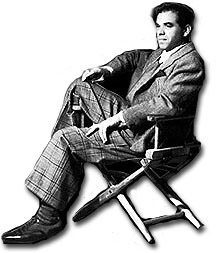
WW2 U.S. propaganda documentaries.
The Frank Capra's "Why We Fight" Collection
The Italian-born Frank Capra moved to the United States at age six, where he lived the "American Dream" he would later romanticize in his films.
In the 30ies Capra saw Leni Riefenstahl's "Triumph of the Will", a film that "...fired no gun, dropped no bombs, but as a psychological weapon aimed at destroying the will to resist, it was just as lethal." (Capra).
He used clips from this film and other Nazi films in the "Why We Fight" series of 7 documentaries he produced from 1942 to 1944.
All our digital copies of the "Why We Fight" series have been aquired in top quality. All the movies are in their integral original version.
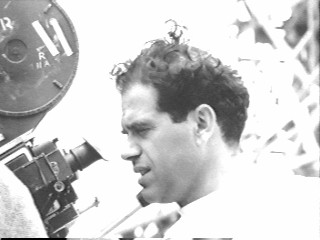

WWII U.S. Propaganda Documentaries "Why We Fight" Collection
We do provide duplicates of the multimedial files of the Collection on a customized DVD-ROM. (1)
Almost all the digital copies of the films are good quality Hi-Res editable videos.
Hundreds of hours of footage from this Collection are available in different format, size and definition. We can suggest you the right one for the use you have in mind.
PRIVATE USE: home TV vision (DVD-Divx player), PC, iPod.
WE LICENSE FOOTAGE from our Collections for: multimedial creations on CD or DVD, TV commercials, film or TV programs, documentary Productions, web sites, marketing/ad campaigns, video email, electronic kiosks, trade shows, business seminars, cultural events, museums, expositions... and more.
Hi-Res videos from our Collections are available on DVD, CD or directly in your inbox. Clips and movies can also be downloaded from our servers using a PW or uploaded by us to your FTP.
WE ARE JUST WAITING FOR YOUR INQUIRES!!!
(1) It is possible to obtain digital duplicates of the multimedial files (movies, videos, audio documents, and Virtual Reality files) from Romano-Archives for research, teaching, general interest user information, and private study purposes.
The files are available on a customized DVD-ROM.
Billing is done when the order is fulfilled. Payment instructions will follow. Normal turn around time for requests is 3 weeks. Rush (2-3 business days) is available for an additional fee of 40 Euros.
Romano-Archives will provide up to 2,000 (or about 10% of this Collection) multimedial files to a single requesting party.
If you have any questions about the fees or need clarification of the service of providing digital multimedial files, please contact Vincent Romano.
The multimedial files of the Collections are compatible with the free version of the most common players: Quicktime Player, Real Player, Windows Media Player.
Mac users can easily view MPEG 1, MPEG 2, MPEG 4, and Divx movies in MacOSX with the free version of this program: VLC Media Player.
All the material in the Romano-Archives Collections is in the public domain and has no copyright attached to it. Only exception are original articles or texts published on this Website and the Romano-Archives' original compilations on CDs or DVDs that are subject to copyright.
Material of the Romano-Archives Collections is made available solely for historical research and educational purposes only. Any trademarks appearing on the material are the sole property of the registered owners. No endorsement by the trademark owners is to be construed, nor was any sought. The products, brand names, characters, related slogans and indicia are or may be claimed as trademarks of their respective owners.
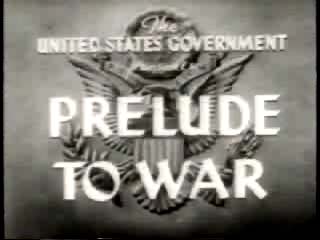
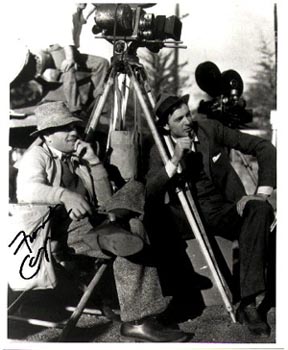
-----
Quality:
# Low
# # Mid-low
# # # Standard
# # # # Mid-High
# # # # # Maximum
-----
1942prelude-to-war.mpeg Available on DVD Only

Audio/Visual: sound, B&W Run time: 00:53:00 Quality: # # # # #
Why We Fight: Prelude to War (1942)
Producer: Frank Capra
From Wikipedia: Frank Capra saw Leni Riefenstahl's "Triumph of the Will", a film that "...fired no gun, dropped no bombs, but as a psychological weapon aimed at destroying the will to resist, it was just as lethal." (Capra). He used clips from this film and other Nazi films in "Prelude to War," Chapter I of Capra's "Why We Fight" series.
The movie describes World War II as a battle between the "slave world" of fascism and the "free world" of American liberty. In the "slave world," the entire populations of Germany, Italy and Japan have been hoodwinked by madmen, opportunists who capitalized on their people's desperation and weakness to rise to power. These demagogues promised revenge for past losses, and in the process convinced their people to give up their rights and accept dictatorship. In the "free world," the principles of equality, freedom, and liberty characterize the greatest leaders, embodied in the works and words of Washington, Jefferson, and Lincoln.
This freedom is a threat to the fascist dictators of the Axis powers, who claim that democracy is weak and must be eradicated. The film claims that the ultimate goal of the Axis powers is to enslave the nations of the "free world," a desire made manifest in the Japanese invasion of Manchuria and Mussolini's colonial war in Ethiopia.
1942the-nazi-strike.mpeg Available on DVD Only

Audio/Visual: sound, B&W Run time: 00:41:00 Quality: # # # # #
Why We Fight: The Nazis Strike (1942)
Producer: Frank Capra
From Wikipedia: "The Nazis Strike," Chapter II of Frank Capra's "Why We Fight" series, summarizes Adolph Hitler's plan for world conquest and Germany's full scale preparation in pursuit of this end. While the Nazis plead poverty and pacifism, they spend incredible amounts of money to prepare a war machine of unparalleled strength and destructive capability. While Hitler assures the other leaders of the world he has no interest in promoting National Socialism, he begins "softening up" future target nations by sponsoring local Nazi organizations in other countries. The film explains that the key to Germany's world conquest is the occupation of central Russia, a heartland rich in natural resources. Hitler begins his march in this direction by annexing Austria and part of Czechoslovakia. With these new territories, he now possesses a massive front against Poland, which he invades and conquers within three weeks.
After the invasion of Poland, Britain and France declare war on Germany, which then signs a non-aggression pact with the Soviets so Hitler can re-focus his energy against his enemies to the west.
1942Divide-and-conquer.mpeg Available on DVD Only

Audio/Visual: sound, B&W Run time: 00:57:00 Quality: # # # # #
Why We Fight: Divide and Conquer (1942)
Producer: Frank Capra
From Wikipedia: "Divide and Conquer," Chapter III of Frank Capra's "Why We Fight" series, begins with Britain and France's declaration of war on Germany after Hitler's invasion of Poland. The film covers the Nazi capture of Denmark and Norway, steps necessary to mount a future attack on Britain, then describes in detail Hitler's strategy as he conquers Luxembourg, Belgium and the Netherlands. Special attention is paid to Nazi atrocities. Dead and injured children are shown en masse and the film explains how the bombing of Rotterdam leads to "thirty thousand men, women and children killed in ninety minutes." The narrator tells how the Luftwaffe bombs small villages so that refugees clog the highways, and how it uses precision machine gun fire to herd the survivors toward the allied armies, who find their progress severely constrained as a result. An American military officer details the Nazi plan for an invasion of France, which Hitler conquers in just over a month. The Germans bludgeon the French armies into surrender, then "enslave" much of the local population to service the German military regime. This is a brilliant film which, step by step, clearly explains why Nazi agression had to be stopped. Top quality in its visual and narrative approach.
1943battle-of-britain.mpeg Available on DVD Only

Audio/Visual: sound, B&W Run time: 00:54:00 Quality: # # # # #
Why We Fight: The Battle of Britain (1943)
Producer: Frank Capra
From Wikipedia: "The Battle of Britain," Chapter IV of Frank Capra's "Why We Fight" series, begins after Hitler's conquest of Western Europe. Once firmly in control of the parts of France and Norway closest to Great Britain, the Nazis commence their massive air assault on the British isles. Outnumbered six to one, the fighters of the Royal Air Force defend their skies against the Luftwaffe for close to four months. Capra embellishes the British successes, for example the film claims the RAF fought 200 dogfights in the first thirty minutes of the battle alone, and that by the end of the first month they had destroyed 900 German planes. (In truth, the number is closer to 260). However, the success of the British defenses forced the Germans to change strategies, switching to more frightening night raids that terrorized London. But the British resolve won the day, in grand fashion. The film claims total German losses of more than 2,700. The real number is closer to 1,600. The number of downed British planes equaled approximately half that of Germany.
1944BattleOfRussiaI.mpeg Available on DVD Only

Audio/Visual: sound, B&W Run time: 00:37:00 Quality: # # # # #
Why We Fight: The Battle of Russia Part I (1943)
Producer: Frank Capra
From Wikipedia: "The Battle of Russia," Chapter V of Frank Capra's "Why We Fight" series, follows the beginning of the end for Adolph Hitler. Part One shows how the Nazi regime, frustrated by the tenacity of British resistance, sets its sights on the Soviet Union instead. As it follows the Nazi march into Russian territory, the film provides a brief summary of the attempts of foreign powers to invade Russia over the past seven hundred years. It explains why the country is such a hot prize and why no army in history ever succeeded in conquering it. Hitler is portrayed as a fool, his hubris blinding him to the evidence of history. The film illustrates how the Red Army's method of fighting a scorched-earth strategy and a reliance on guerilla and urban warfare was bound to defeat the Nazis as it had defeated every invader before them. Capra's favorable portrait of the Russians is notable. Released two years before the start of the Cold War, the film portrays the Soviets as a diverse and freedom-loving people, in many ways similar to their then-allies, the people of the United States.
1943BattleOfRussiaII.mpeg Available on DVD Only

Audio/Visual: sound, B&W Run time: 00:46:00 Quality: # # # # #
Why We Fight: The Battle of Russia Part II (1943)
Producer: Frank Capra
From Wikipedia: "The Battle of Russia," Chapter V of Frank Capra's "Why We Fight" series, follows the beginning of the end for Adolph Hitler. In Part Two, the German army falls victim to the Soviet scorched-earth strategy. The Russian forces flee from the start, retreating deep into their homeland, drawing the Nazis farther and farther away from the German border. As the Red Army falls back, it destroys infrastructure and natural resources, making it difficult for the Nazi army to live off the land. Once the famed Russian winter sets in, Germany is doomed. The film focuses on the stalwart defense of Leningrad. After the Nazis surround the Soviet metropolis in an attempt to starve out its residents, the Russians outsmart them by constructing a fully operational railroad across a frozen lake to get supplies to the beleaguered citizens. The Battle of Russia ends up as a disaster for the Germans, who lose more than 800,000 men.
Subject: Siege of Leningrad
It seems like the makers of the film, in order to emphasize the heroism of the residents of Leningrad, have omitted to mention one fundamental fact concerning the siege.
The Nazis never intended to actually take the city of Leningrad, but rather to obliterate it along with its population. The endurance of the Leningraders is rather more understandable (albeit less heroic) if one realizes that they, like the Warsaw Ghetto Jews, were marked for extermination by the Nazis.
1944BattleOfChina.mpeg Available on DVD Only

Audio/Visual: sound, B&W Run time: 00:42:00 Quality: # # # # #
Why We Fight: The Battle of China (1944)
Producer: Frank Capra
From Wikipedia: "The Battle of China," Chapter VI of Frank Capra's "Why We Fight" series, explains why the Empire of Japan possessed such a strong interest in ruling the disparate lands of China. In an attempt to break the will of the Chinese people in one massive assault, Japan invades Nanking and massacres forty thousand civilians. The attack results in an opposite effect, galvanizing the Chinese resistance and unifying the separate lands into a single Chinese identity. While the Japanese take control of all Chinese ports, hoping to cut off all resources from its victim, China's allies effectuate an engineering miracle. They construct the seven hundred mile long Burma Road over the mountains of Myanmar, and set up a constant caravan of trucks to ship food and materiel to the Chinese armies, keeping them alive. Frustrated by their inability to conquer China, the Japanese turn their attention to the islands of the Pacific, and the United States.
1944war_comes_to_america.mpeg Available on DVD Only

Audio/Visual: sound, B&W Run time: 01:03:10 Quality: # # # # #
Why We Fight: War Comes to America (1944)
Producer: Frank Capra
From Wikipedia: "War Comes to America," Chapter VII of Frank Capra's "Why We Fight" series, begins by celebrating the American values of liberty and freedom that are threatened by the aggressive forces of Germany and Japan. The early years of the war are seen from the perspective of the United States, with particular focus on the reluctance of the American people to get involved in a European or Asian conflict. As the German army rolls across Europe, Nazi organizations spring up across the United States. The film attributes the rise of such groups to Hitler's policy of softening up future targets with political sympathizers, and shows one surreal Nazi rally at Madison Square Garden, where paintings of George Washington hang alongside the swastika. Eventually the American Government realizes that war is inevitable and cranks up the production of weapons and drafts the largest army in its history. The film ends with the war's beginning for the United States, the surprise attack by the Japanese on Pearl Harbor, December 7, 1941.
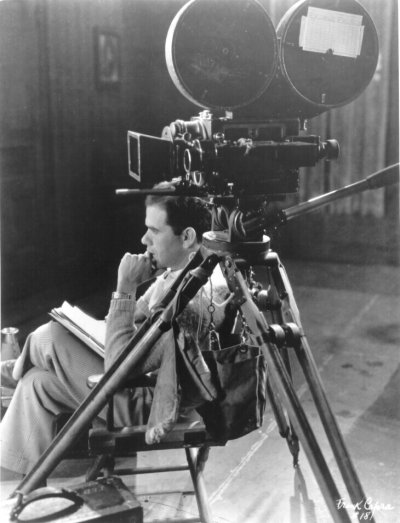
-----
 webdesign by ACE51
webdesign by ACE51I Websites romanoarchives.altervista.org/ - digilander.libero.it/romanoarchives/ - www.webalice.it/romanoarchives/ - ww2incolor.altervista.org, non rappresentano alcuna testata giornalistica e vengono aggiornati senza alcuna periodicità, esclusivamente sulla base dei contributi di aggiornamento occasionalmente reperiti e/o segnalati. Pertanto, non possono essere considerati in alcun modo un prodotto editoriale ai sensi della legge n. 62 del 7 marzo 2001.
All Rights Reserved. Reproduction of any part of this Website without express permission is strictly prohibited.